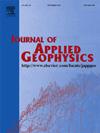地震地热温标。第一部分:基于井深尺度地震速度数据的温度预测神经网络建模
IF 2.2
3区 地球科学
Q2 GEOSCIENCES, MULTIDISCIPLINARY
引用次数: 0
摘要
对利用地震层析成像资料预测地下温度的可能性进行了可行性研究。为此,我们利用了天山北部沿W-E剖面的地震速度数据和距离剖面不同距离的三个钻孔的地热数据。为了根据地震速度数据对温度预测进行建模,我们使用了一种监督人工神经网络(ANN)方法。温度预报精度的估计采用了两种模式:(1)深度外推,(2)另一地质环境评价。对深度温度预测的精度估计表明,相对误差取决于可获得数据的深度与目标深度之间的比率。特别是,当目标深度超过震源深度5-10倍时,用纵波速度预测温度的精度明显高于用纵波速度预测温度的精度。另一方面,当外推深度小于初始深度的两倍时,平均相对误差分别为1%和2%。不同地质环境下的温度预测精度分析表明,温度预测精度实际上不依赖于“源”孔与“靶”孔位置的间距。平均而言,纵波和横波的预测精度大致相似,平均相对误差分别为4.8%和4.7%。由此可以得出结论,利用地震速度数据进行地下温度的神经网络预测可以达到可接受的精度(至少在井深尺度上),并且可以用作地震地温计。本文章由计算机程序翻译,如有差异,请以英文原文为准。
Seismological geothermometer. Part I: Neural network modeling of the temperature prediction from seismic velocity data at borehole depth scale
A feasibility study is carried out to assess the possibility of predicting the subsurface temperatures from seismic tomography data. To this end, we used seismic velocity data along the W-E profile in the Northern Tien Shan and geotherms from three boreholes located at different distances from the profile. To model the temperature prediction from seismic velocity data, we used a supervised artificial neural network (ANN) approach. Estimation of the temperature prediction accuracy was fulfilled in two modes: (1) extrapolation in depth, and (2) assessment in another geological environment. The accuracy estimates of the temperature predictions at depth have shown that the relative errors depend on the ratio between the depth for which the data are available and the target depth. In particular, temperature prediction from seismic S-wave velocity data is markedly more accurate than the prediction from P-wave velocity if the target depth exceeds the source depth 5–10 times. On the other hand, in extrapolation to a depth less than twice the initial depth the average relative errors are 1 % and 2 %, accordingly. The accuracy analysis of temperature predictions in different geological environments showed that the accuracy of temperature prediction practically does not depend on the spacing between the locations of the “source” and “target” boreholes. On average, the accuracy of the prediction from P- and S-waves is approximately similar, with average relative errors of 4.8 and 4.7 %, respectively. It can be concluded that neural network prediction of the subsurface temperature from seismic velocity data can be performed with acceptable accuracy (at least, at borehole depth scale) and can be used as a seismological geothermometer.
求助全文
通过发布文献求助,成功后即可免费获取论文全文。
去求助
来源期刊

Journal of Applied Geophysics
地学-地球科学综合
CiteScore
3.60
自引率
10.00%
发文量
274
审稿时长
4 months
期刊介绍:
The Journal of Applied Geophysics with its key objective of responding to pertinent and timely needs, places particular emphasis on methodological developments and innovative applications of geophysical techniques for addressing environmental, engineering, and hydrological problems. Related topical research in exploration geophysics and in soil and rock physics is also covered by the Journal of Applied Geophysics.
 求助内容:
求助内容: 应助结果提醒方式:
应助结果提醒方式:


